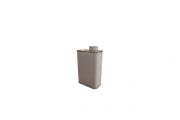In short, direct costs are directly related to the product being sold, while indirect costs are what you spend money on to earn sales. If you’re familiar with operating expenses, you might be wondering what the difference is between SG&A and operating costs. SG&A can be broken down into selling expenses and general and administrative expenses. SG&A is a critical line on your income statement, and it gives investors and financial analysts a clear view of a company’s operational cost structure. These are costs directly linked to the selling of your products or services. SG&A costs are all the non-production expense items that organizations typically incur.
An excessive increase in the SG&A costs might bring down the profitability of the company. Sidhanta & Chakrabarty (2010) empirical study showed that SG&A expenses have a significant impact on sales revenue and profits. They found the inverse relation between the debt to equity ratio and expenses. As an investor looking to grow your savings, understanding a company’s administrative expenses can help you better evaluate how a company invests resources. Accurate selling costs help the business work toward getting key sales metrics such as the Customer Acquisition Cost (CAC).
Examples of SG&A
SG&A are the operating expenses incurred to 1) promote, sell, and deliver a company’s products and services, and 2) manage the overall company. SG&A expense is listed below gross profit, followed by other expenses that do not fall under SG&A or COGS, such as financial expenses which do not directly relate to central operations. After all these expenses are deducted from revenue, profit or loss is what we call net income, quite literally, “the bottom line” on the income statement.
- Other corporate services that couldn’t easily be charged to each product line could be allocated by simply dividing those costs by the number of product lines.
- Companies often provide footnotes that accompany their financial statements, where they may explain what exactly makes up the different categories of expenses such as for SG&A.
- Picking the right fiscal year for your business can save you and your accountant a lot of time, money and stress.
- To calculate a total SG&A figure for an annual income statement, you’ll have to go through your company’s books for that year and add up all of the non-COGS, interest or income tax expenses you see there.
- Expenses such as rent, insurance, utilities, and supplies are examples of general expenses.
- For the less well-performing firms, a negative relationship exists between sustainability and financial performance.
Where do I find selling, general & administrative expenses?
Overheads are also very important cost element along with direct materials and direct labor. It’s important to note that the specific expenses included in SG&A can vary depending on the company and the industry in which it operates. However, the goal is to capture all the costs incurred in the company’s daily operations, excluding the direct costs of producing goods or services. Again, your selling expenses can include both direct and indirect costs of selling a product. On the other hand, your business’s general and administrative expenses include day-to-day costs (e.g., rent, utilities, etc.).
Administrative expenses
These are all the business costs that aren’t directly involved in making products or providing services—the day-to-day costs of keeping the lights on. Of course, if a company includes its selling costs in administrative expenses, it’ll be listed under SG&A on the income statement. It all depends on how the company wants to break out their operating expenses.
SG&A includes all other non-production costs, such as marketing and administrative costs. One way to use selling expenses as part of profitability analysis is the ratio of SG&A to sales. Divide SG&A by gross profit (revenue minus the cost of goods sold) to get the percentage of the gross profit that is going into SG&A expenses. General & Administrative Expenses are the overhead expenses of the company. They are the fixed costs incurred by the company like the rent, mortgages, and insurance that need to be paid.
This expansion marks not just a rebound but a structural strengthening of Singapore’s position as a wealth hub for Asia-Pacific’s ultra-high-net-worth individuals (UHNWIs). Singapore,f officially the Republic of Singapore, is an island country and city-state in Southeast Asia. The country’s territory comprises one main island, 63 satellite islands and islets, and one outlying islet. The information featured in this article is based on our best estimates of pricing, package details, contract stipulations, and service available at the time of writing. Pricing will vary based on various factors, including, but not limited to, the customer’s location, package chosen, added features and equipment, the purchaser’s credit score, etc. For the most accurate information, please ask your customer service representative.
What are SG&A expenses?
Companies with high administrative fees may not operate as efficiently as those with low overhead costs, which can negatively impact their bottom line. On the other hand, companies with low administrative expenses and efficient operations may generate higher profits. When you look at a company’s income statement, you’ll find selling, general, and administrative (SG&A) expenses listed.
Calculate the Selling, General, and Administrative expenses (SG&A) by adding all the expenses incurred by a company in its daily operations, excluding the costs of producing goods or services. You do this by adding the costs of selling, general, and administrative expenses. General expenses, or overhead expenses, are a subset of Selling, General, and Administrative (SG&A) expenses. They refer to the costs incurred by a company in its daily operations, not directly tied to producing goods or services.
- General and administrative expenses refer mainly to the day-to-day overhead costs.
- Hence, SG&A expenses are said to be period costs as opposed to being part of a product’s cost.
- But typically, selling, general and administrative expenses represent the same costs as operating expenses.
- If SG&A goes down, while sales rise, the business will become more profitable.
Given below is a list of all the different categories of expenses that are included in it. However, it is important to note that the classification of certain costs might depend on the specific context and industry. For example, research and development (R&D) costs are typically considered SG&A costs in most industries.
The way you list your SG&A and operating expenses on your income statement is completely up to you. In the firms with low sales revenue, SG&A expenses and material cost impact will be equal. In medium revenue firms, SG&A expenses impact is more on the operating income than on the material costs. It can help you know what proportion of their capital a company is spending on indirect or support expenses relative to direct operating are sg&a operating expenses costs, as well as to their relative cash position.
They are incurred in the day-to-day operations of a business and may not be directly tied to any specific function or department within the company. High SG&A expenses in relation to revenue can be problematic for almost any business. SG&A costs include any expenses related to the overall operation of the company but not directly related to producing and delivering its products. Think of a furniture importer that has only a warehouse and almost no other fixed expenses, just a 15% commission that they pay to independent road salesmen. As sales vary each month, the costs follow accordingly, protecting the business and its shareholders in a down market. Examples of SG&A include rent, advertising, administrative staff salaries, and accounting fees.
Rent or mortgage on the building is one example of any property insurance the organization holds, such as fire and flood. Even minor operating expenses like lawn service and cleaning fall in this category. To calculate a company’s operating income, you subtract operating expenses from its gross revenue. Tracking SG&A expenses provides valuable insight into a company’s operations, including its sales and administrative functions. It can help companies to make informed decisions about their operations and to improve their efficiency and effectiveness.










